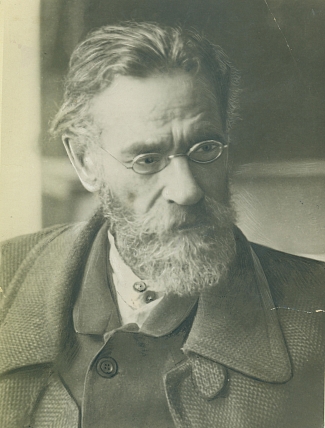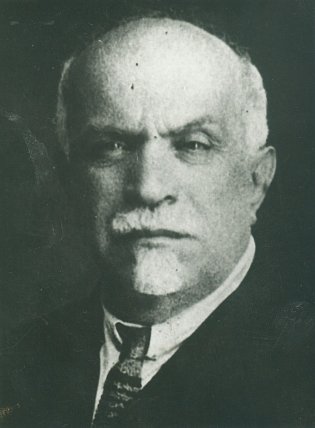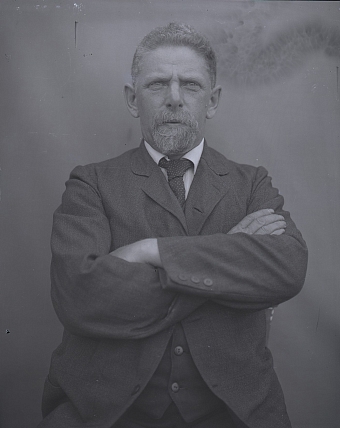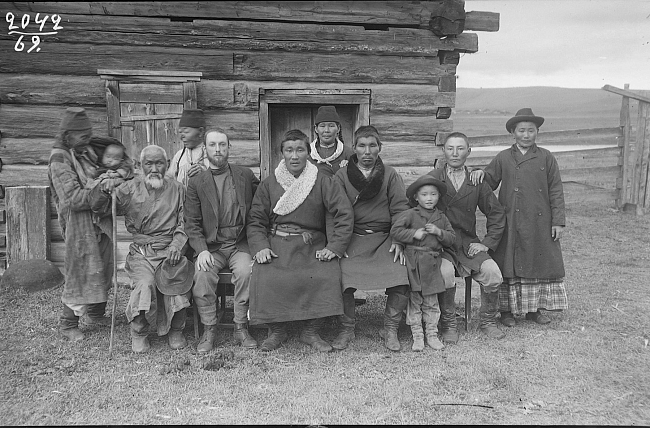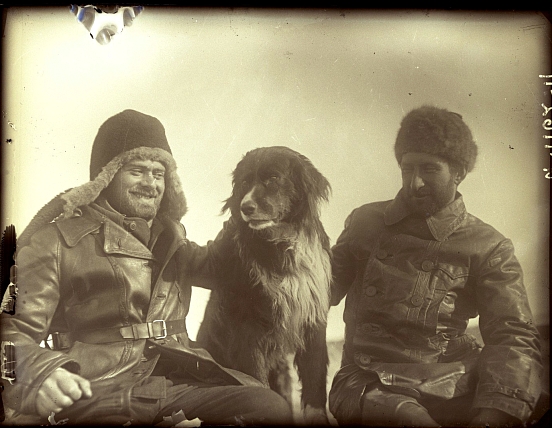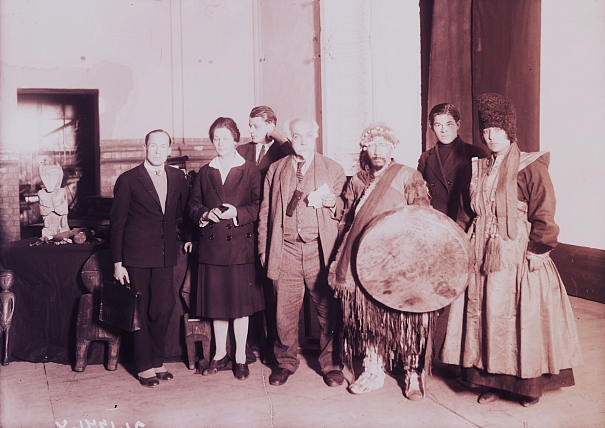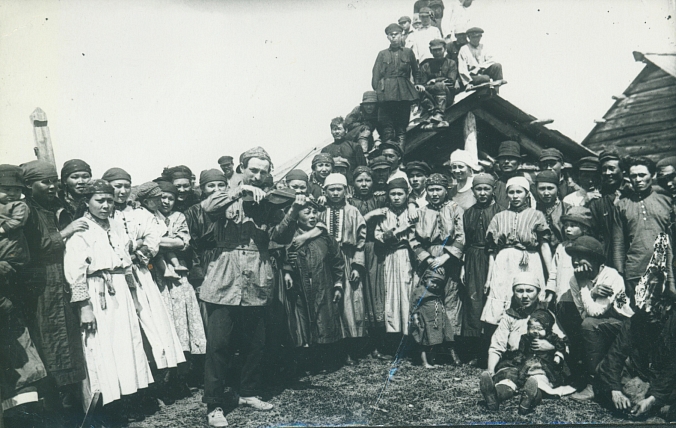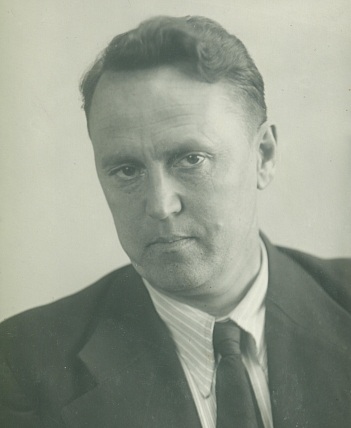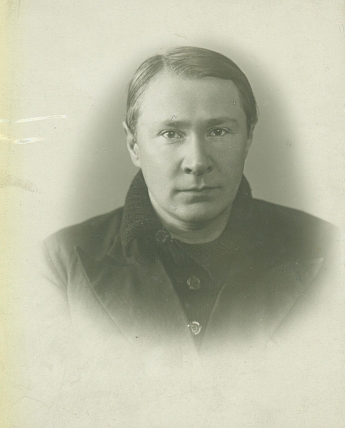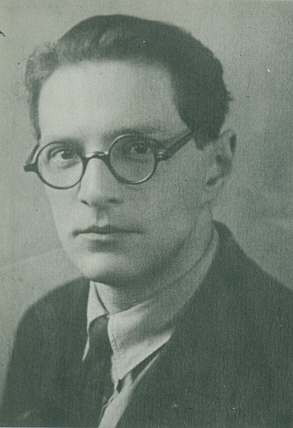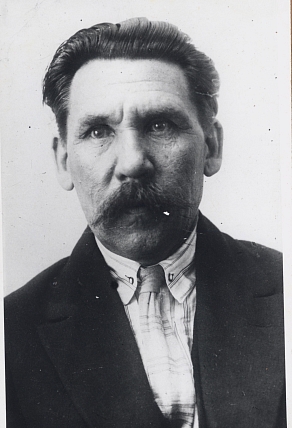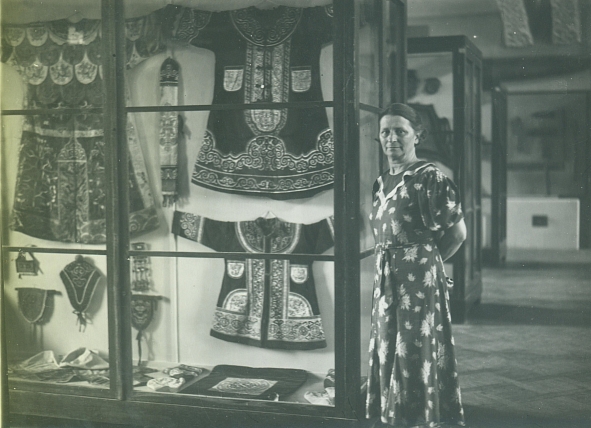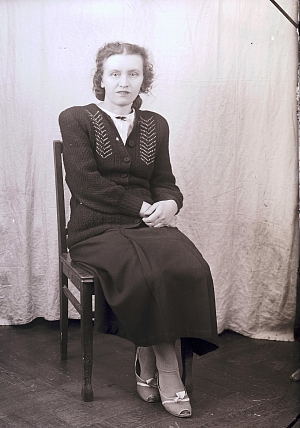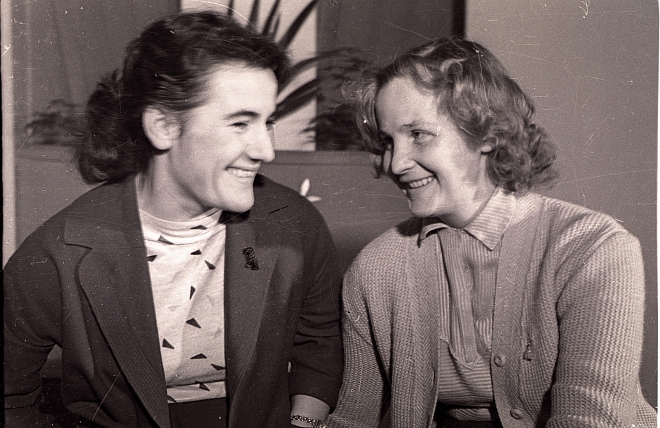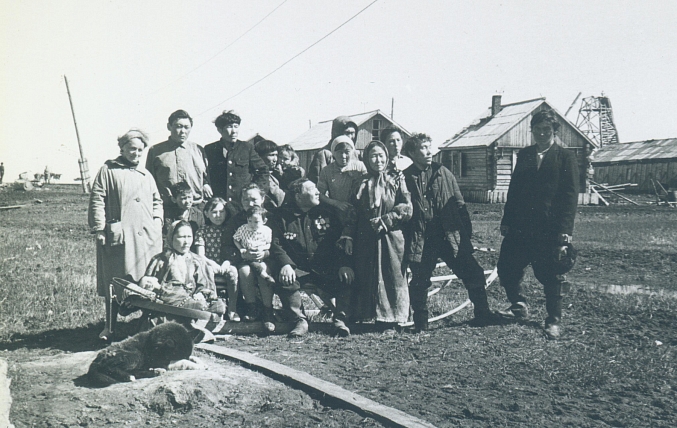- Administration
- Research Departments
- Arctic Research Center
- Europe Research Center
- Department of Australia, Oceania and Indonesia
- Department of America
- Department of Physical Anthropology
- Department of Archeology
- Department of Africa
- Department of East and Southeast Asia
- Department of Caucasus
- Department of Siberia
- Department of Central Asia
- Department of South and Southwest Asia
- Department of the History of Kunstkamera and 18th-century Russian Science (M.V. Lomonosov museum)
- Laboratory of Audiovisual Anthropology
- Laboratory "The International Center of Islamic Studies"
- Laboratory of Museum Technologies
- Management and Museum Services
Department of Siberia
Contact Information
Address: 3, Universitetskaya nab., St.-Petersburg, 199034
Phone: +7 (812) 328-41-42
E-mail: siberia@kunstkamera.ru
Head of Department
Sergey BEREZNITSKIY, Doctor of Sciences in History
Department Staff
Vasilisa BOBROVA, Research Assistant
Vladimir DYACHENKO, Candidate of Sciences, Senior Researcher
Nikolay GONCHAROV, Junior Researcher
Marina OSIPOVA, Candidate of Sciences, Senior Researcher
Larisa PAVLINSKAYA, Candidate of Sciences, Scientific Consultant
Olga SHULGINA, Junior Researcher
Olga STEPANOVA, Candidate of Sciences, Researcher
Zhanna YUSHA, Doctor of Sciences in Philology, Leading Researcher
History of the Department
The history of the Department of Siberia starts in the first years of the 20th century when L. Ya. Sternberg, an outstanding researcher of the traditional culture and folklore of Amur and Sakhalin peoples, the Museum’s senior ethnographer. His co-worker as junior ethnographer was D.A. Klemenz, another expert in the culture of East Siberian peoples, and future director (from 1903) of the Department of Ethnography of the RussianMuseum. Among the colleagues of L.Ya. Sternberg in the department of that period were V.I. Jochelson and V.G. Bogoraz, already internationally known specialists in peoples of the extreme northeast of Siberia, members of Sibiryakov’s expedition to Yakutia (1894), famous Jesup expedition to Chukotka and Kamchatka (1900-1902), and Kamchatka expedition (1908–1911), the longest one.
The Director of the Museum of Anthropology and Ethnography at that time (1894-1918) was great turkologist Friedrich Wilhelm (Vasily Vasilievich) Radloff, famed for reading ancient Turkic Orkhon-Yenisei inscriptions (achievement shared with the famous Danish scientist Vilhelm Ludwig Peter Thomsen). It was this constellation that not always built the Department of Siberia, but also gave a powerful momentum to the development of Siberian studies as such and the making of the Russian school of ethnography.
Thus circle of prominent ethnographers issued a brilliant series of monographs, a result of their expedition activity:
- Jokhelson V.I. The Koryak. New York, G.F. Stechert, 1905-1908.
- Yokhelson V.I. The Yakut. New York. American Museum of Natural History, 1933.
- Bogoraz V.G. The chukchee. Leiden-New York, E.J.Brill, G.F.Stechert, 1904.
- Bogoraz V.G. Chukchee Mythologie. Leiden-New York, American Museum of Natural History, 1910
- Sternberg L. Ya. Gilyaki, orochi, goldy, negidaltsy, ainy [Gilyak, Oroches, Golds, Negidals, Ainu]. Khabarovsk: Dalgiz, 1933.
- Sternberg L. Ya. Materialy po izucheniyu gilyatskogo yazyka i folklora [Materials for the study of Gilyak language and folklore]. St. Petersburg, 1908.
- Jochelson V. I. Materialy po izucheniyu yukagirskogo yazyka i folklora [Materials for the study of Yukaghir language and folklore]. St. Petersburg, 1900.
- Bogoraz V. G. Material’naya kul’tura chukchei [Chukchee’s material culture]. Moscow: Nauka, 1991.
Simultaneously, they actively contribute to developing new scientific principles of MAE ethnographic exhibitions. They were based on the human evolutionary theory and typology of cultures. One of the first was the exhibition “Peoples of the Extreme Northeast” comprising a special “Shamanism and Shamans” section, set up in 1903. In 1925, the Gallery of Shamans exhibition was created under the leadership of Bogoraz, whose concept described a correlation of the forms of Siberian shamanism and stages of social development of Siberian peoples. In 1934, the Chukchee Society exhibition was presented.
A greatest merit of these scientists was persistent training of young specialists in the ethnography of Siberia. In the 1910s, Sternberg set up Instructive Courses of Ethnography of the MAE (which became the Postgraduate Department after the 1917 Revolution). They played a tremendous role in the making of a brilliant constellation of scientists who were gradually joining the Department (which got an official status in 1933. Among the first attendees of these courses was S. M. Shirokogorov (1911–1913) who later became a well-known specialist in the Tungus-Manchu group peoples, and B. E. Petri (1912–1916) who devoted himself to studying the natives of the Baikal region.
In later years, the Department had such prominent ethnographers as A.A. Popov, G.D. Verbov, V.N. Vasiliev, G.N. Prokofiev, E.D. Prokofieva, G.M. Vasilevich, L.E. Karunovskaya, A.G. Danilin, S.V. Ivanov, N.P. Dyrenkova, N.K. Karger, V.V. Antropova, N.A. Lipskaya, and L.P. Potapov, who issued classical papers on the ethnography of the Siberian peoples.
The primary task faced by the Department at the time of its establishment was collection of field ethnographic material on all the peoples of Siberia, in-depth study of the region’s traditional cultures, and preparation and publication of monographic research papers. The Department’s employees participated in expeditions of the Commission for Study of Tribal Structure of the Population of the USSR, and in the Commission for Study of the Yakut ASSR, working in West and East Siberia, in Altai, Far East, and Yakutia. The materials they collected, a large part of which is now kept in the Archive of the MAE, indicate that in broad outline, they achieved their goals. Their materials impress by their highest scientific level, and by the broad coverage of the culture they studied – from descriptions of husbandry and everyday life to huge corpuses of folklore and shaman texts recorded in the languages of bearers of those traditions. This became possible because of their high professional training, an important prerequisite being the knowledge of the language of the people to be studied. The main type of publications in those years were articles on various aspects of traditional cultures of Siberia; most of them have not lost their scientific value in our days. Only few monographic studies had a chance to be published. First of all, it is:
- Vasilevich G.M. Sbornik materialov po evenkiiskomu (tungusskomu) fol’kloru [A Collection of Materials on Evenki (Tungus) Folklore] Leningrad: Izdatel’stvo Instituta narodov Severa, 1936.
- Popov A.A. Tavgiitsy [The Nganasan] Moscow-Leningrad: Izd-vo Akademii Nauk SSSR, 1936.
- Potapov L.P. Ocherki po istorii Shorii [Essays in the History of Shoria]. Moscow-Leningrad: Izd-vo Akademii Nauk SSSR, 1936.
In the post-war period, research was developed in the Department in two directions. On the one hand, comprehensive studies of particular peoples continued, which provides a wide landscape of the history of the Siberian region’s traditional cultures; on the other hand, research based on the comparative historical and comparative typological methods unfolded on a broad scale. The result of the former was a whole range of monographs whose scientific value is not only in studies of the ethnic history of a people, description of its culture, and finding out its genetic origins and development processes, but also in preservation of all these data for the Siberian indigenous ethnoses themselves, most of which did not have their written history, and most importantly, were already losing their ethnic traditions. The works by A.A. Popov, L.P. Potapov (Head of the Department in 1946-1967), G.M. Vasilevich, I.S. Vdovin (Head of the Department in 1972–1977), N.F. Prytkova, E.D. Prokofieva, V.V. Antropova, Ye.A. Alekseenko, V.P. Dyakonova, and Ch.M. Taksami (Head of the Department in 1977–2001) that appeared in that period are of great scientific importance. The collective effort of the Department personnel titled “The Peoples of Siberia” (1956) should also be noted. It was published in the “Peoples of the World” series, and later translated into English by Chicago University Press (1964).
In the late 1960s, the study of traditional religious beliefs of the region’s indigenous peoples became a priority topic. A summarizing study on this theme comprised three collective monographs:
- Priroda i chelovek v religioznykh predstavleniyakh narodov Sibiri i Severa [Nature and Man in Religious Beliefs of Siberian and Northern Natives] / Ed. by I.S. Vdovin. Leningrad, Nauka, 1976.
- Problemy istorii obschestvennogo soznaniya aborigenov Sibiri [Issues in Ideological History of Indigenous Siberians] / Ed. by I.S. Vdovin. Leningrad: Nauka, 1981.
- Khristianstvo i lamaism u korennogo naseleniya Sibiri [Christianity and Lamaism in the Indigenous Population of Siberia] / Ed. by I.S. Vdovin. Leningrad: Nauka, 1979.
As regards the second direction, the Department’s researchers published a “Historical and Ethnographical Atlas of Siberia” in 1961, containing a detailed description of the material in terms of garments, means of transport, shaman’s tambourines, and its analysis, classification, and typology. It is provided with richest illustrative material and maps of the spread of various types of all cultural components covered in it; it is a unique phenomenon in Russian ethnology. The collective monograph “Garments of the Peoples of Siberia” (1971) is accomplished in the same spirit.
A special place in the Department’s research activity belongs to works of S.V. Ivanov (Head of the Department in 1967–1972). His monographs and articles are a real encyclopedia of folk arts and crafts of Siberia’s indigenous population.
A special page in the Department’s history is integrated archeological/ethnographic study of Tuva and adjacent regions of Mongolia. The expedition headed by L. P. Potapov worked in field for nine seasons. The result of this tremendous effort was the publication of an excellently illustrated three-volume book (1960, 1966, 1970).
Of noticeable importance in the Department’s activity was starting the “Siberian Readings” periodic conference in 1988, to be held once in three years.
Essential Publications
Monographs:
- Dyrenkova N.P. TyurkiSayano-Altaya. Statyi i etnographicheskiye materialy [Turkomans of the Sayano-Altai. Aricles and ethnographic materials] / Publication editors: K. Schoenig, L.R. Pavlinskaya. St. Petersburg: Nauka, 2012, 408 pp.
- Stepanova O.B. Traditsionnoye mirovozzreniye selkupov: predstavleniya o krugovorote zhizni i dushe [Traditional worldview of the Selkups: Their concepts about the circle of life and soul. St. Petersburg: Peterburgskoye vostokovedenie, 2008, 304 pp. (Ethnographica Petropolitana).
- Stepanova O. B. Traditsionnoye mirovozzreniye selkupov: predstavleniya o krugovorote zhizni i dushe (Vtoroye izdaniye) [Traditional worldview of the Selkups: Their concepts about the circle of life and soul (Second edition)]. St. Petersburg, Abakan: Peterburgskoye vostokovedenie, Izdatelskiy dom “Panteon”, 2010, 303 pp.
Collective monographs:
- Davydov V.N., Simonova V.V., Sem T.Yu., Brandishauskas D. Ogon, voda, veter i kamen v evenkiyskikh landshaftakh. Ontnosheniya cheloveka i prirody v Baikalskoi Sibiri [koll. monografiya] [Fire, water, wind, and stone in Evenk landscapes. Relationships of man and nature in Baikal Siberia []collective monograph]] / Russian Academy of Sciences, Peter the Great Museum of Anthropology and Ethnography (Kunstkamera); [Publication editor: V. N. Davydov]. St. Petersburg: MAE RAN, 2016, 196 pp. (Kunstkamera Petropolitana).
- Davydov V.N., Karbainov, Simonova V. V., Tselischeva V. G. Aginskaya Street, tanets s ognyom i alyuminievye strely: prisvoyeniye kulturnykh landshaftov [Aginskaya Street, fire dance, and aluminum arrows: Acquirement of cultural landscapes]. Khabarovsk, Far East division of the RAS, Grodekovo Museum Press, 2006, 192 pp. (12 printed sheets).
Collected works
- Grani sotsialnogo: antropologicheskiye perspektuvy issledovaniya sotsialnykh otnosheniy i kultury. Pamyati rossiyskogo etnografa-tungusoveda Nadezhdy Vsevolodovny Yermolovoi [Facets of the social: Anthropological prospects of the study of social relations and culture. In memory of Russian ethnographer, Tungus student Nadezhda Vsevolodovna Yermolova] / Sibirskiy sbornik – 4. / Publication editors: V. N. Davydov, D. V. Arzyutov. St. Petersburg: MAE RAN, 2014, 726 pp.
- Nenetskoyeolenevodstvo: okruzhayuschayasreda, yazykigosudarstvennayapolitika. Arkhivnye materialy [Nenets reindeer farming: Environment, language, and national policy. Archive materials]. / Ed. by D. V. Arzyutov, M. D. Lyublinskaya. St. Petersburg: MAE RAN, 2016, 15 printed sheets [in print]
- “Ot klassikov r marksizmu”: soveschaniye etnografov Moskvy i Leningrada 1929 g. [From the classics to Marxism: Meeting of ethnographers of Moscow and Leningrad in 1929] / Ed. by D. V. Arzyutov, S. S. Alymov, D. J. Anderson. St. Petersburg: MAE RAN, 2014, 511 pp. (Kunstkamera-Archive series, vol. VII)
- Davydov V. N. Coming Back to the Same Places: The Ethnography of Human-Reindeer Relations in the Northern Baikal Region // Journal of Ethnology and Folkloristics, 2014, Vol. 8, No. 2, pp. 7-32.
- Davydov V.N. Comment on Charles Stépanoff, Charlotte Marchina, Camille Fossier, and Nicolas Bureau. Animal Autonomy and Intermittent Coexistences: North Asian Modes of Herding // Current Anthropology, Vol. 58, № 1, pp. 72-73.
- Davydov V.N. Temporality of Movements of Northern Baikal Reindeer Herders, Hunters and Fishermen // Journal of Ethnology and Folkloristics, Vol. 6, No. 1, 2012, pp. 27-47.
- Sirina A.A., Davydov V.N., Povoroznyuk O.A. & Simonova V.V. S.M. Shirokogoroff’s book ‘Social Organization of the Northern Tungus’ and its Russian translation: history, structure, interpretations // Asian Ethnicity, 2015, Vol. 17, No. 1, pp. 30 – 46 (ID: 1086088 DOI:10.1080/14631369.2015.1086088)
- Davydov V.N. Fishery in ‘Free Spaces’: Non-Compliance with Fishery Regulations in Northern Baikal Evenki Village // Polar Record, Vol. 50, Special Issue 04, October 2014, pp. 379-390 (WOS, SCOPUS).
- Davydov V.N. People on the Move: Development Projects and the Use of Space by Northern Baikal Reindeer Herders, Hunters and Fishermen // Études mongoles et sibériennes, centrasiatiques et tibétaines, № 43-44, 2013, pp. 1-3. (Scopus)
- Davydov V.N. Public Health and Folk Medicine among North Baikal Evenkis // Medical Pluralism in Central and Southeastern Siberia: Buriat, Evenki, Orochen, and Ket Healing Traditions. Northern People's Medical Traditions vol. 1. / Edited by David G. Anderson. Edmonton: Canadian Circumpolar Institute Press, 2011, p. 129-146.
- The Construction of the Soviet Ethnography and “The Peoples of Siberia”. History and Anthropology. 2016. Vol. 27. No. 2. P. 183-209 (co-authored with David G. Anderson).
- Davydov V. N., Simonova V. V. “Muzeifikatsiya prirody”: envaironmentalnyi diskurs v postsovetskom lokalnom muzeye na Severnom Baikale [“Museification of nature”: Environmental discourse in a post-Soviet local museum on the North Baikal coast] // Credo New, 2011, pp. 214-232.
- Davydov V. N. Borba s khischnikami i povsednevnye praktiki soveremennykh olenevodov: otnosheniya cheloveka i zhivotnykh na Severnom Baikale (po resultatam polevykh issledovaniy 2007-2012 gg.) [Predator control and everyday practices of today’s reindeer herders: Relationships of man and animals (based on the results of field research in 2007-2012] // Materialy polevykh issledovaniy MAE RAN. Issue 12 / Ed. by E. G. Fedorova. St. Petersburg: MAE RAN, 2013, pp. 23-42.
- Davydov V. N. Vlast provodnika: kayury-evenki i ispolzovaniye olennogo transporta na Severnom Baikale [Power of the guide: Evenki reindeer-team drivers and the use of reindeer transport on the North Baikal coast] // Ranniye formy potestarnykh sistem / Publication editor: V. A. Popov. St. Petersburg: MAE RAN, 2013, pp. 267-280.
- Davydov V. N. Dolgany Vostochnogo Taimyra: opyt polevykh issledovaniy v poselkakh Novorybnoye i Syndassko v 2015 g. [The Dolgans of the East Taimyr: Experience of field studies in the settlements of Novorybnoye and Syndassko] // MaterialypolevykhissledovaniyMAERAN. Vyp. 16. Pamyatinashikhkolleg-polevikov/ Ed. by E. G. Fedorova. St. Petersburg: MAE RAN, 2016, pp. 67-80.
- Davydov V. N. Issledovaniye otnosheniy cheloveka i olenya v Yuzhnoi Yakutii [A study of the relations of man and reindeer in South Yakutia] // MaterialypolevykhissledovaniyMAERAN/ Ed. by E. G. Fedorova. Issue 14. St. Petersburg: MAE RAN, 2014, pp. 95-117.
- Davydov V. N. Kulturnaya autentichnost i korennye narody: institutsionalnye protsessy i politika identichnosti [Cultural identity and indigenous peoples: Institutional processes and identity policy] // Zhurnalsotsiologiiisotsialnoiantropologii, St. Petersburg, 2006, Vol. IX, No. 3(36), pp. 93-110. (The magazine is on the Higher Attestation Commission list)
- Davydov V. N. Natsionalnaya evenkiyskaya derevnya na Severnom Baikale: soprotivlenie dminiruyuschemu diskursu [Etnic Evenk village on the North Baikal: Resistance to the dominating discourse] // Zhurnal sotsiologii i sotsialnoi antropologii, 2008, No. 3, pp. 146-163 (the magazine is on the Higher Attestation Commission list)
- Davydov V. N. Otnosheniya cheloveka i zhivotnykh na Krainem Severe: zametki o polevom issledovanii na Taimyre v iyule-avguste 2014 g. [Relationships of man and animals in the Extreme North: Notes on a field research effort in Taimyr in Jyly and August 2014] // MaterialypolevykhissledovaniyMAERAN/ Publication editor: E. G. Fedorova. Issue 15. St. Petersburg: MAE RAN, 2015, pp. 44-66.
- Davydov V. N., Simonova V. V. Sobachye serdtse: antropologiya sobakoyedeniya v postsovetskoi evenkiyskoi derevne [Dog’s heart: Anthropology of dog-eating in a post-Soviet Evenki village] // Vestilaboratoriidrevnikhtekhnologiy. 2008 pp. 213-230.
- Davydova Ye. A., Davydov V. N. Problema domestikatsii severnogo olenya na Chukotke po materialam V. G. Bogoraza (k 150-letiyu so dnya rozhdeniya) [The problem of reindeer domestication in Chukotka according to the materials of V. G. Bogoraz (for the 150th anniversary of his birth] // Nauchnoye mneniye, 2015, No. 11, pp. 22-28 ((The magazine is on the Higher Attestation Commission list).
- Dannye folklora o proiskhozhdenii selkupskogo olenevodstva [Folklore data on the origins of Selkup reindeer farming] // Ekologiyadrevnikhitraditsionnykhobschestv. MaterialyV mezhdunarodnoinauchnoikonferentsii, g. Tyumen, 7-11 noyabrya 2016 g. Issue 5. Part 2. Tyumen, TyumenUniversity Press, 2016, pp. 251-255.
- Sirina A. A., Davydov V. N. “…Ne imeyuschiye ni khlebopashestva, ni skotovodstva, ni olenei, a tolko odnu lish rechku etu”: paternalizm i rynochnaya ekonomika v severo-vostochnom Pribaikalye [“…Having neither agriculture nor cattle farming, nor reindeers, but just this little river”: Paternalism and market economy in north-western BaikalLand] // Etnograficheskoyeobozreniye, 2017. No. 1, pp. 70-85 (Scopus, Higher Attestation Commission).
- Stepanova O. B. “Ognennaya” ipostas materi-praroditelnitsy selkupov [The “fire” godhead of the Foremother of the Selkups] // Trudy TOKM. Vol. XV. Tomsk, 2008, pp. 218-226.
- Stepanova O. B. Vera Pavlovna Dyakonova [Vera Pavlovna Dyakonova] // Etnograficheskoyeobozreniye, No. 5, 2011, pp. 188-190.
- Stepanova O. B. Zlaya ili dobraya: k voprosu o glavnom mifologicheskom obraze selkupov [Evil woman or good woman: Revisiting the issue of the main mythic image of the Selkups] // Omskiynauchnyivestnik. 2006, No. 8, pp. 52-55.
- Stepanova O. B. Mat-zmeya i obraz dukha-okhranitelya v mifologicheskikh predstavleniyakh selkupov [Mother Snake and the patron ghost image in the mythic beliefs of the Selkups] //Sibirskiysbornik-1. PogrebalnyiobryadnarodovSibiriisopredelykhterritoriy. Kniga II. St. Petersburg, 2009, pp. 87-93.
- Stepanova O. B. Mir mertvykh i pogrebalnyi obryad selkupov [The world of the dead and obsequies of the Selkups] // Mifologiya smerti. Struktura, funktsiya i semantika pogrebalnogo obryada narodov Sibiri. St. Petersburg, 2007, pp. 182-198.
- Stepanova O. B. Mifologicheskiy obraz materi-dereva v traditsionnom mirovozzrenii selkupov [The mythic image of Mother Tree in the traditional worldview of the Selkups] // Arkheologiya, etnografiyaiantropologiyaYevrazii. 2007, No. 3, pp. 115-118.
- Stepanova O. B. Severnye selkupy: systema traditsionnykh vzglyadov v zerkale odnogo intervyu [The Northern Selkups: A system of traditional views in the mirror of one interview] // Vestnikarkheologii, antropologiiietnografii, 2014, No. 2 (5). Tyumen. 2014, pp. 124-131.
- Stepanova O. B. Selo Tolka i ne tolko [Tolka village and more] // MaterialypolevykhissledovaniyMAERAN. St. Petersburg, 2016, Issue 16, pp. 46-66.
- Stepanova O. B. Selkupy segodnya: po itogam ekspeditsii v Purovskiy rayon Tyumenskoi oblasti YANAO 2013 g. [The Selkups today: Results of the 2013 expedition to Purovsky District, Yamalo-Nenets Autonomous Okrug of Tymen Oblast] // MaterialypolevykhissledovaniyMAERAN. St. Petersburg. 2014, Issue 14, pp. 83-94.
- Stepanova O. B. Selkupy sela Sovrechka [The Selkups of Sovrechka village] // Vestnikarkheologii, antropologiiietnografii, 2014, No. 3 (30) 2015. Tyumen, 2015, pp. 126-134.
- Stepanova O. B. Stoibische verkhnetazovskiky selkupov (po materialam sovremennykh polevykh issledovaniy) [Camping-ground of the Upper Taz Selkups (based on the materials of present-day field research] // MaterialypolevykhissledovaniyMAERAN. St. Petersburg, 2009, Issue 9, pp. 23-42.
- Stepanova O. B. Traditsionnoye khozyaistvo severnykh selkupov: itogi reanimatsionnykh protsessov pervogo desyatiletiya XXI v. (po materialam polevykh issledovaniy 2004-2012 gg.) [Traditional farming of the northern Selkups: Results of the reanimation processes of the first decade of the 21sr century (based on the materials of field research of 204-2012]. // Materialy polevykh issledovaniy MAE RAN. St. Petersburg, 2013. Issue 13, pp. 6-22.
- Stepanova O. B. Traditsionnye nazemnye pogrebalnye sooruzheniya severnykh selkupov [Traditional above-ground burial structures of the northern Selkups] // Etnograficheskoyeobozreniye, No. 4, 2015, pp. 151-168.
- Stepanova O. B. Turukhanskiye selkupy: vzglyad so storony (po materialam ekspeditsii 2014 g. v Turukhanskiy rayon Krasnoyarskogo kraya) [The Selkups of Turukhansk District: A detached view (based on the materials of the 2014 expedition to Turukhansk District, Krasnoyarsk Territory] //MaterialypolevykhissledovaniyMAERAN. St. Petersburg, 2015, Issue 15, pp. 23-43.
- Stepanova O. B. Folklor severnykh selkupov: polevye sbory 2004, 2005 i 2008 gg. [Folklore of the northern Selkups: Field acquisitions of 2004, 2005 and 2008] // Materialy polevykh issledovaniy MAE RAN. St. Petersburg, 2012, Issue 12, pp. 5-31.
- Stepanova O. B. Lyudmila Vasilievna Khomich [Lyudmila Vasilievna Khomich ] // Etnograficheskoyeobozreniye No. 4, 2011, pp. 183-184.
2017-2019 RESEARCH TOPIC: MAN-MADE LANDSCAPE OF SIBERIA: TRADITION AND MODERNITY
(Supervisor: V. N. Davydov, Candidate of Sciences, PhD)
Essential contributors to the project: lead researcher L. R. Pavlinskaya, Cand. Sc.; senior researcher V. I. Dyachenko, Cand. Sc.; senior researcher E. G. Fedorova, Cand. Sc.; researcher O. B. Stepanova, Cand. Sc.; researcher D. V. Arzyutov, Cand Sc.; junior researcher I. A. Grachev.
This topic is under-developed in Russian ethnography. Exploring a landscape, man persistently modifies it with his actions: he moves, extracts materials, works the land, breeds animals, hunts, fishes, forages, and cultivates plants. Recently, there have been many discussions in science as to the intensity of man-made impacts on the environment. Within the framework of this topic, it is intended to review the changes of traditional forms of landscape use under the influence of innovations. The intensity extent greatly depends on the perception of space. The issue of the perception of space has been actively studied in international social anthropology, particular components of nomadic tribes’ camps have been analyzed, and the structure of their settlements has been reviewed, however little attention has been paid to reviewing all of these elements in the context of their interrelation and relation to the surrounding landscape. Many works in Russian ethnography have been dedicated to survey of traditional dwelling places. Nevertheless, no attention was given to reviewing the place of a dwelling in the structure of everyday relocations and its ties to other structures. The goal of the research team is to fill this gap.
Collections
The Siberian collections of the MAE are rightly considered as one of the world’s best ethnographic collections on the traditional culture of indigenous peoples of North Asia. Currently, the Siberian archive contains 747 collections totaling over 29,000 items. The exhibits comprised in it cover most diversified aspects of life of the peoples, presenting a rather complete image of the culture of each of the 42 indigenous ethnoses of Siberia.
The beginning of the Siberian collection is dated back to the time of foundation of the Petersburg Kunstkamera, where particular Siberian exhibits were already presented in the first years of its existence. By the end of 1747, the Siberian collections contained over 200 items, most of which were garments, utensils, and shaman cult objects of various peoples of Siberia. Most probably, the Kunstkamera received a large number of these items from members of the “Great Northern Expedition” (1732–1742) and primarily from Professor Gerhard Friedrich Miller, Stepan Petrovich Krasheninnikov, and Jacob Lindenau who regularly sent the materials collected in the expedition to St. Petersburg. Unfortunately, this earliest collection on Siberian peoples’ culture perished in the fire of 1747, but some of its exhibits have survived in drawings, which at that time were made from virtually every object finding its way to the Museum (a collection of these drawings is kept in the St. Petersburg Branch of the RAS Archive, and was recently published).
The loss of the Siberian archive began to be recovered as early as in 1748 when G. F. Miller returned from the expedition. Among the collections he brought with him, a noticeable position is held by archeological items from South Siberian regions acquired as a result of diggings and gathering of portable material, and everyday life and cult objects of the Kalmyks and Mongols. By 1768, the Siberian collection of the Kunstkamera had grown dramatically due to the demand of the Academic Office and the Senate Decree of September 3, 1761 sent to Siberian Governor Count Samoilov regarding acquisition of collections for the Museum. The collections of that period have mostly been lost by now, and the cause of this remains not quite clear. Undoubtedly, the nature of material plays a tremendous role in this. The bulk of the collection was fur clothing, for which the storage conditions of those times were really destructive. Evidently, there were other causes as well. One of them was poor documenting of museum exhibits in the 18th century. Therefore it is quite possible that some of them (over 100 items) have survived and was later included in the so-called “collections of unknown origin” or “old collections of the Kunstkamera.”
The next phase of active additions to the Siberian archive of the Kunstkamera is related to the round-the-world cruises of Russian seafarers in the early 19th century, which opened a new page in the history of Russian ethnography. In that period, the Museum enhanced its collection on the culture of peoples of Siberia’s Pacific coast, which were comparatively modest in the 18th c. In the early 1830s, the Kunstkamera received collections on the culture of indigenous peoples of Chukotka and Kamchatka acquired by members of the expedition of the Navy sloop Senyavin commanded by F. P. Litke (1826–1829). It was one of the expeditions whose assignment was primarily to survey the entire Bering Sea coast, and to study the everyday life and culture of the region’s indigenous population.
In the mid-19th century, the Museum’s Siberian archive on the culture of Pacific coast peoples was augmented collections assembled in Chukotka and Kamchatka by Lieutenant Zagoskin, an officer of the Russian-American Company. At the same time, collections on the culture of paleo-Asian peoples were received, acquired by I. G. Voznesensky, one of the most known explorers of Russian America and Far East, during his ten-year expedition research activity in those distant lands of the Russian Empire (1839–1849). All exhibits gathered by these scientists grouped into four collections totaling 256 items. Finnish linguist and ethnographer Matthias Alexander Castrén worked in that period (1845–1849) among the Ugric and Samoyed peoples of West Siberia. Studying the Siberian peoples’ languages, he regularly assembled ethnographic collections on the culture of the Khanty, Mansi, and Selkup people. Added to the Yakut culture collections were acquisitions by naturalist Alexander Fedorovich Middendorf during his long expedition to East Siberia to study the flora of that region (1843–1844).
The second half of the 19th c. and early 20th c. saw a dramatic enhancement in the ethnographic study of all the Siberian peoples. As a result of purposeful collecting activity, more than 20,000 exhibits were added to the Museum’s Siberian archive, which became the world’s largest collection on the culture of indigenous population of North Asia. Standing out from the collectors of that period is a brilliant constellation of Russian scientists whose research activity was integral to work in ethnographic field. Among them are such figures as Academician L. I. Schrenk, V. N. Gondatti, L. Ya. Sternberg, V. G. Bogoraz, D. A. Klemenz, A. V. Adrianov, D. N. Anuchin, A. V. Anokhin, K. M. Rychkov, V. I. Jochelson, V. K. Arseniev, B. O. Pilsudsky, V. L. Seroshevsky, E. K. Pekarsky, V. N. Vasiliev, S. M. Shirokogorov, B. E. Petri, and many others. A great merit of these scientists is that they not only built the Museum's Siberian archive, but also developed a method of collecting and recording ethnographic monuments. The collections acquired by them not only give a general idea of very diversified aspects of the traditional culture of such or another people, but also disclose each of them in all the diversity of its facets. These collections often comprise whole series of similar items belonging to different groups of one ethnos, which makes them a unique source for comparative study of cultural phenomena and of ethnic and cultural genesis processes in Siberia. Besides, the exhibits are generally supported with documentation containing rather detailed information on the item’s purpose, its function in the culture, ethnicity indicating the ethnos, local group, and family. The illustrative photo archive of the Department of Siberia also began to be generated in that period.
The 1920s-1930s were a no less fruitful period in the development of the MAE Siberian archive. Continuing the older generation’s scientific traditions of collecting, their pupils proceed to acquiring ethnographic collections, filling a lot of gaps that still existed in the Siberian archive. Among their collections, of special value are those assembled by A. A. Popov, L. E. Karunovskaya and A. G. Danilin, N. P. Dyrenkova, E. D. and G. N. Prokofiev, N. K. Karger and I. I. Kozminsky, V. N. Chernetsov, G. M. Vasilevich, Yu. A. Kreinovich, and N. F. Prytkova who were employees of the Department of Siberia in various years. In the 1950s-1980s, the MAE Siberian collections were enriched due to the collecting by the Department’s researchers L. P. Potapov, I. S. Vdovin, Ye. A. Alekseenko, V. P. Dyakonova, L. V. Khomich, G. N. Gracheva, Ch. M. Taksami, E. G. Fedorova, V. A. Kisel, and L. R. Pavlinskaya.
In the recent decade, the updating of the MAE ethnographic archive has been continuing. The collections to be mentioned first of all are those acquired by V. A. Kisel on the Tuvans, by I. A. Grachev on the Russians of Siberia, and by D. A. Arzyutov on the Altai people and Kazakhs of Altai.
The following catalogues on the Department’s collections were published:
- Kluyeva N. I., Mikhailova E. A. Katalog syomnykh ukrasheniy narodov Sibiri [Catalogue of Siberuan portable ornaments] // Materialnaya i dukhovnaya kultura narodov Sibiri (Sbornik MAE, Vol. XLII). Leningrad, Nauka, 1988, pp. 195–208.
- Malygina A. A. Katalog kukol-igrushek narodov Sibiri (po kollektsiyam MAE) [Catalogue of Siberian toy dolls in the collections of the MAE] // Materialnaya i dukhovnaya kultura narodov Sibiri (Sbornik MAE, Vol XLII). Leningrad, Nauka, 1988, pp. 188–194.
- Taksami Ch.M., Ogikhara Sh. Ainskie kollektsii Museya antropologii i etnografii im. Petra Velikogo (Kunstkamera) Rossiiskoi Akademii nauk: Katalog [Ainu Collections of Peter the Great Museum of Anthropology and Ethnography (Kunstkamera): A Catalogue. Tokyo, 1998. 204 p. (in Japanese, Russian and English).
- Fedorova E. G. Mansi v fondakh MAE. Katalog kollektsiy [The Mansi in the MAE archives. A catalogue of collections] // Kurier Petrovskoi Kunstkamery, St. Petersburg, MAE RAN. 1995, Issue 2–3, pp. 252–264.
The collections on the Siberian peoples are primarily analyzed in the continuing volumes of the MAE Collection.
Currently, the custodian of the MAE object collections on the Siberian peoples is senior custodian V. A. Kisel, Candidate of Sciences.
Illustrative Photo Collections
The Department of Siberia keeps photo collections on virtually all of the Siberian peoples, their ethnoterritorial groups, and on some peoples of adjacent territories. There are 54 ethnonyms among the names of the ethnoses recorded on the lists and captured in the photo collections. The sections dedicated to the culture of Siberia’s numerous peoples contain photographs capturing the geographic environment of their habitation, anthropological types, material culture (including the household set, dwelling place, clothes etc.), and spiritual culture (beliefs, religious cults, traditional feasts etc.).
Most of the photo collections were received as a result of multiple expeditions of researchers to Siberia. However, the Department also keeps illustrative collections that were donated by other institutions or individuals, or generated over the many years of work of the Department’s employees in other museums of Russia. Thanks to the latter, such fundamental ethnographic works as “Historical and Ethnographical Atlas of Siberia”, the “Peoples of Siberia” volume, Siberian Ethnographic Collections etc. were published, which also used many photos of exhibits from the Siberian collections of the MAE. Many collections of the Department are unique and depict phenomena or objects of material and spiritual culture that have long disappeared from traditional ethnography and can only be met in old publications or in photographs.
593 collections of photo prints are kept in the Department of Siberia, their total number exceeding 40,200 items. Another 321 collections on the Siberian peoples’ ethnography kept in the MAE do not have prints so far, and are kept as negatives. Thus, the total number of the collections makes an impressive figure of 914 archival units. Of course, the collections are far from similar in the number of photographs in them; there may be collections with a single photo, but archival units exceeding 1,500 photos can also be found (for instance И-1930, the collection of the Tuva integrated archeological/ethnographic expedition totaling 1606 photographs). If we look at the Siberian peoples in terms of the highest availability of illustrative photo materials kept in the Department, the collections will be distributed as follows: Tunguses, 68 collections; Chukchee, 53; Yakuts, 45; Nivkhs, 41; Nanais, 39; Khanty, 37; Nenets, 33; Koryaks, 32, etc. downwards.
The buildup of illustrative photo collections of the Department of Siberia started in 1880, when explorer I. S. Polyakov after an expedition to West Siberia delivered a collection of 64 photos depicting the Khanty’s ethnography. In the same year 1880, a collection of 18 photos on the ethnography of the Amur peoples was received from the library of the Academy of Sciences, and a photo portrait of an Amur native was also received from Academician L. I. Schrenk. Five years later, in 1885, Dr. A. Bunge, head of the Polar Expedition, provided to the MAE some photos taken in the north of the Yakut region. Since then, photo collections have been entering the Kunstkamera increasingly.
The illustrative photo collections of the Department of Siberia are supervised by senior researcher V. I. Dyachenko, Candidate of Sciences.
The electronic catalogues of the illustrative photo archive may be seen here: http://www.kunstkamera.ru/kunst-catalogue/index.seam?page=1&c=PHOTO&cid=484525
